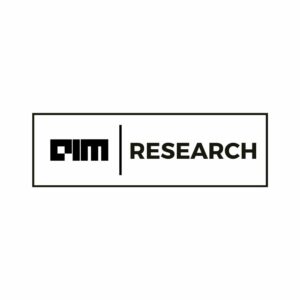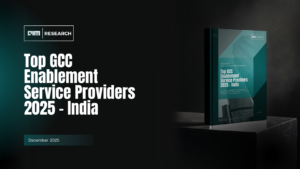In the fast-paced world of business, capturing the attention of investors requires more than just a run-of-the-mill presentation. You need a fantastic pitch deck that persuades them your early-stage start-up has a clear path to success and is worthy of their investment. But beyond the captivating story you have to tell and your passion, investors closely scrutinize the viability of your product concept, and that’s where TAM, SAM, and SOM come into play. These terms are crucial metrics used to evaluate your business model and understand the potential for your product. Their utility go beyond impressing investors – TAM SAM SOM are metrics that are used constantly to make informed business decisions in areas such as growth, new product innovation, market expansion, and segmenting the target audience.
What are TAM/SAM/SOM?
All right, let’s dive into these concepts. Total Addressable Market (TAM) represents the total potential market for your product or service. It’s the entire audience you could reach if all the stars aligned perfectly. Your TAM is influenced by the type of market you are operating in, whether it’s an existing market, a re-segmented market, or a completely new market. For example, entering an established market means competing with current rivals, while re-segmenting a market involves addressing unmet demands from adjacent opportunities. Creating a new market requires introducing an innovative offering to a fresh set of customers. TAM is ever-changing, and as companies evolve and expand, their TAM also grows. A classic example is Amazon, whose TAM in the mid 90s when they started off, would have been related to buyers of books but has exploded exponentially since then, as their product offering has expanded manifold.
Next, we have the Serviceable Addressable Market (SAM), which is a subset of TAM. SAM narrows down the potential market to the portion that is relevant to your product or solution. It represents the market you can target that is likely to be receptive to your product. For instance, if you are in the Snacks space but specifically you provide healthy snacks suited for tea time, you may define your SAM as the audience that snacks during tea time.
Finally, there’s the Share of Market (SOM), which represents your company’s current market share within the SAM. It’s what you’ve actually managed to capture in terms of market demand. Or if you are a new entrant, SOM is what you can realistically hope to gain in terms of the share. The initial SOM of a new business depends on various factors, such as the competitive landscape, marketing strategies, product differentiation, pricing, and overall market demand. It is essential for new businesses to set realistic expectations regarding their initial SOM. For an established product, the SOM is essential for gauging how well you’re performing against your competitors and monitoring it is critical to assess whether you are gaining or losing ground.
In 2014, renowned finance professor at NYU’s Stern School of Business, Aswath Damodaran famously called Uber’s value at $5.9 billion, anchoring his TAM estimates on the traditional taxi business. We now know that he failed to consider Uber’s potential to reshape the market and tap into new segments. Today, Uber’s market cap stands at a staggering $90 billion, highlighting the importance of looking beyond the obvious market to understand a product’s potential.
TAM, SAM and SOM are critical pieces of information required in several strategic decisions relating to every part of a business, and it is important to get the numbers right.
How do we measure TAM SAM SOM
Now, as you saw from the above Uber example, measuring TAM SAM SOM is not a simple task. It requires a deep understanding of the business landscape, understanding of consumer needs and preferences, and a clear grasp of your company’s unique value proposition. These metrics go beyond mere numerical values and also demand a nuanced assessment of the competitive environment. To accurately calculate them, you’ll need to triangulate data from multiple sources, both internal and external.
Before diving into market sizing, you must first clarify your company’s core identity and the industry you operate in. This means deciding on your target audience, your business model, and the geographic scope of your operations and a number of other factors.
Let’s take a fictional company called “TechGadgets” to illustrate the process. TechGadgets produces high-end smartphones.
Total Addressable Market (TAM): TechGadgets aims to sell its smart phones globally. So, its TAM would include all potential customers worldwide who might buy their smart phones. Let’s assume 1.4 billion customers a year in the global smart phone market, with an average annual cost of $350, 70% (around 1 Billion) of which are Android phones, which is the space TechGadgets plays in. So, the TAM for TechGadgets would be 1 Billion * $350 = $350 Billion.
Serviceable Addressable Market (SAM): Not all 1 Billion potential customers are a good fit for TechGadgets’ high-end smartphones. They specifically target customers who prefer premium features and are willing to pay a higher price. After conducting market research, TechGadgets identifies that their SAM consists of 200 Million customers worldwide, with an average annual revenue of $800 per customer. So, the SAM for TechGadgets would be 200 Million * $800 = $160 Billion.
Share of Market (SOM): In the previous year, TechGadgets generated $10 Billion in revenue from smart phone sales. To calculate their share of the market, we divide last year’s revenue by the previous year’s SAM: $10 Billion / $160 Billion = 0.06. This means TechGadgets had a market share of 6% last year.
However, if TechGadgets were a new entrant into the market, they would have to size their SOM based on a number of factors including which countries/cities to operate in, which network providers they can tie up with, how to sell their product (physical/online/bundles), who to target their products at, what their unique value proposition would be, etc. A detailed Go To Market (GTM) Plan will have to be drawn out that will drive the potential for TechGadgets. Since this is an established market, they would also have to consider already entrenched player, and their strengths. They would have to study the gaps in the market and adjust their product offering to address some of needs in the market that other players are not fulfilling, and will have to set aside a marketing budget to reach these consumers to convince them about why the TechGadgets phone is better than other alternatives. Each of these factors could have an impact on the TAM/SAM/SOM (for instance, if the company has the budget to enter only one country versus globally, or can only reach consumers via social media versus a huge media blitz… and so on).
As you can see the TAM SAM SOM calculation is complex and is deeply connected to the strategy. So in practice it is often an iterative process, and often times requires a number of data sources that require to be triangulated.
TAM SAM SOM are fundamental concepts for making informed business decisions and understanding growth potential. As dynamic environments influence market conditions, it is essential to periodically update these metrics. Before gathering data, however, clear strategic thinking on your own business is crucial, and as important is knowing the limits of your business at this point, in terms of ability to expand, develop partnerships and and reach your audiences. Even with this, calculating TAM SAM SOM demands collecting comprehensive data from multiple sources. Embracing TAM SAM SOM as a guiding framework empowers businesses to navigate their market landscape and pursue growth opportunities effectively.
Understanding your TAM, SAM, and SOM is not merely crunching numbers; getting it right requires skill that forces a business to look inward about its own strategy and strengths/weaknesses. They provide businesses with a framework and a compass to assess market potential, set realistic goals, and develop effective strategies for success. Dive into the world of TAM SAM SOM and you will find it a rewarding exercise.
This article is written by a member of the AIM Leaders Council. AIM Leaders Council is an invitation-only forum of senior executives in the Data Science and Analytics industry. To check if you are eligible for a membership, please fill out the form here.
Sunita is an established strategy and insights leader with global enterprise experience and outlook. She has a passion for evolving the insights function enriched by the changing world of data. She is fascinated by business models, the dynamism of ecosystems and the ability of technology and data to change lives. Sunita is the Co-founder of Face the Future, a Singapore-based company that aims to help young people activate the human skills they need to thrive in an unpredictable world.







